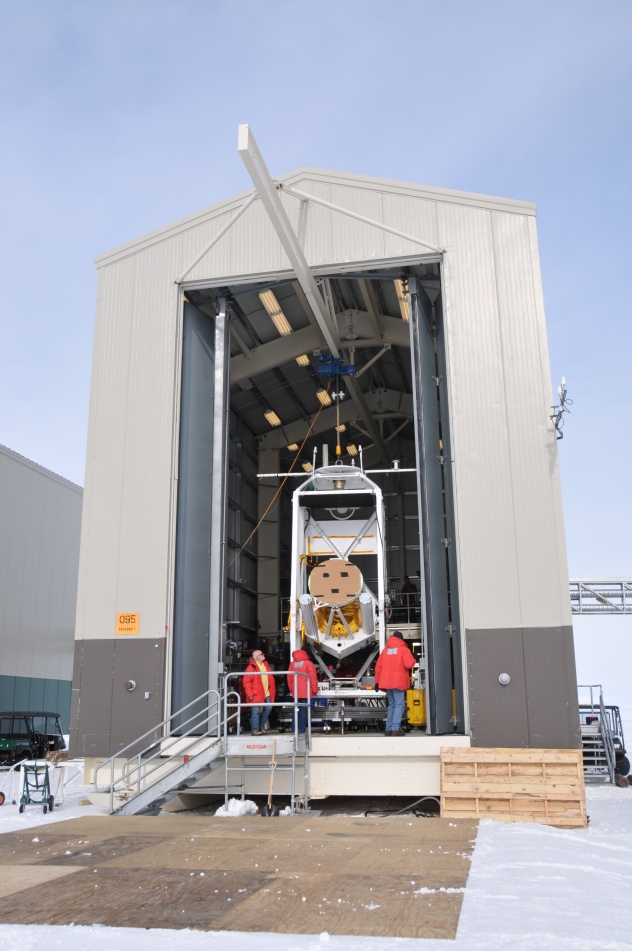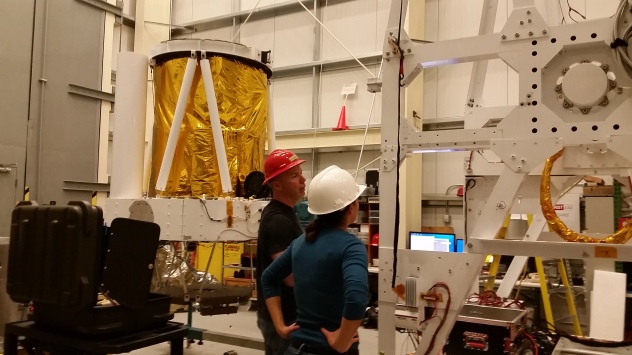STO-2 Progress Update
The STO-2 mission has been progressing remarkably smoothly (mostly!) as we prepare for launch later this month. The instrument team, APL gondola team, and NASA Columbia Science Ballooning Facility have all been pushing hard to make this mission a success.

Pointing testing looking at the sun outside the balloon hangar.

Chris Groppi assembling an instrument package to run the 4.7 THz camera.
On the instrument side of things, the Ball dewar that holds our camera pixels was filled with liquid helium last week. We were able to test the camera detectors once this was done, because the camera will only work at these temperatures. We have 100% of our pixels working at all 3 of our target frequencies! We were able to align all of the cameras properly with the optical system and our Local Oscillators (light pumps, which you can read more about in my previous post here) while the dewar was on the work bench. The alignment took several days and several new bolt holes, but we managed to get everything running perfectly in the end.
One of the things I am helping with is making sure that the camera detectors are pointing straight out of the dewar window and aren’t tilted to the side. One of the easiest ways to do that is to have the camera take a measurement while looking at a hot and cold load in front of the window, and comparing the input power while looking at the two temperature loads. We used the room temperature (~300 Kelvin = 68 F) paddle on a spinning wheel as a hot load and the bottom of a cup of liquid nitrogen (77 Kelvin = -321 F) as the cold load. This ~400 degree temperature change causes a significant change in power received in the camera, which we use to measure the sensitivity of the camera towards a given direction. We scan the cup and paddle system in front of the window to find where the strongest signal from the cold load is, and determine if that is in the center of the window or not.
Once the instrument pointing, noise measurements, and alignment had passed our preliminary tests, we moved forward with the next major progress milestone of putting the dewar underneath the telescope. This involves taking the telescope out of the ‘cradle’ or gondola structure and attaching the dewar to the bottom of it, and then putting the integrated system back in the cradle. Once it is attached, the telescope needs to be re-balanced and tested to make sure that it can tilt and swing without any interference. We were all nervous to see the dewar tilt over, but we had no leaks. We had one electrical problem but it was resolved quickly without costing us much time with our schedule.

Kate and Jim look over the telescope (left) and cradle (right)

Telescope with the dewar attached underneath.
Over the next few days, we will be testing the focusing of our telescope. It is more challenging to focus the telescope than you would expect because the humidity in the atmosphere on the ground absorbs light at the frequencies our instrument can see. We are getting around this problem by using transmitters at a different frequency than our instruments normally use, but can still see. Also up next will be more pointing and alignment tests, installing the communications packages, installing the solar panels, and another hang test. Stay tuned!




Reply